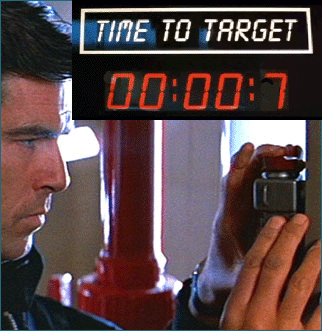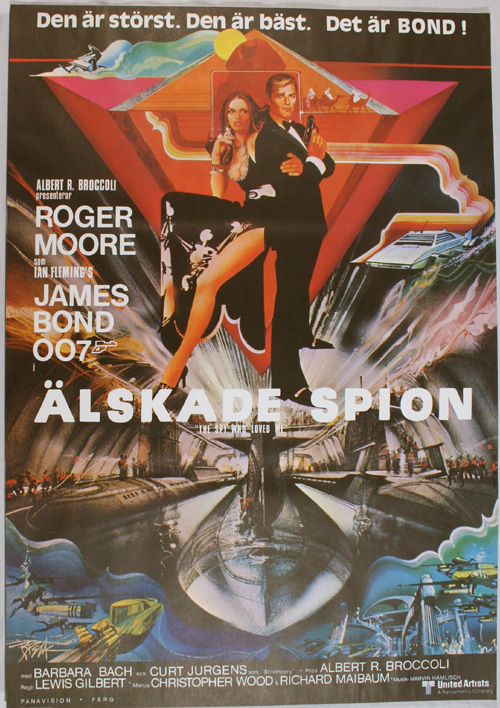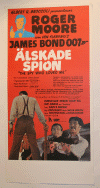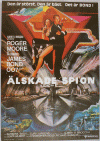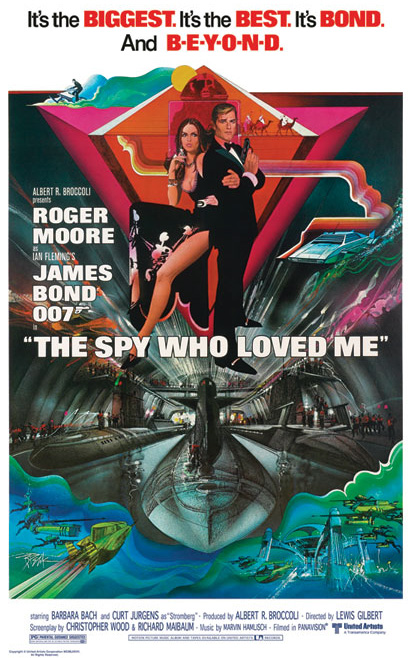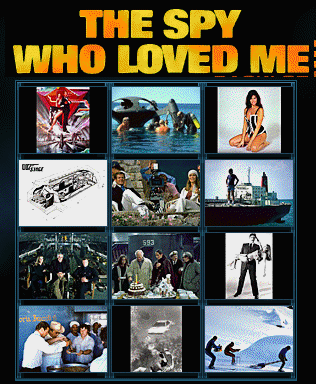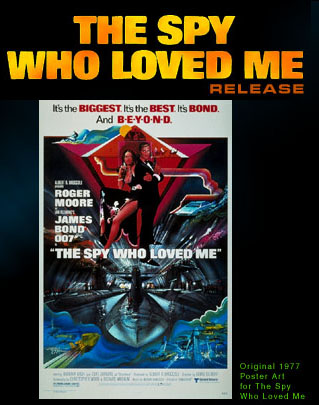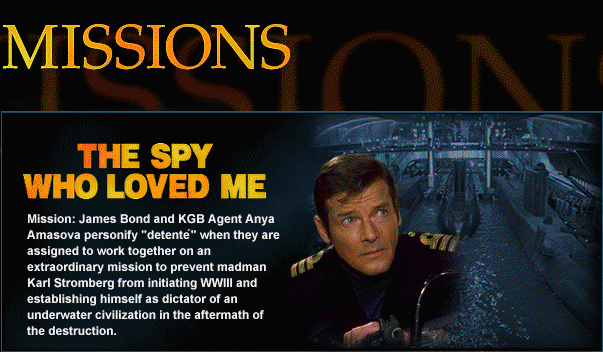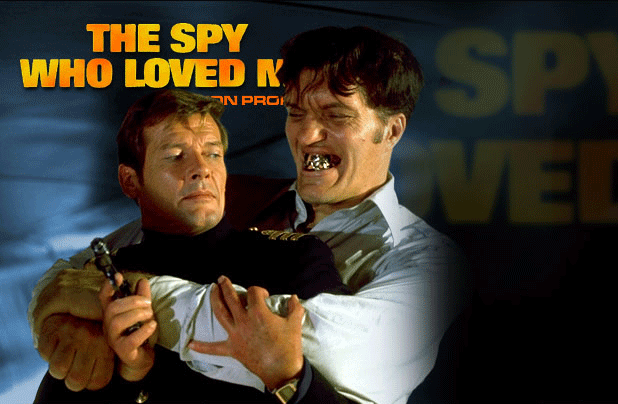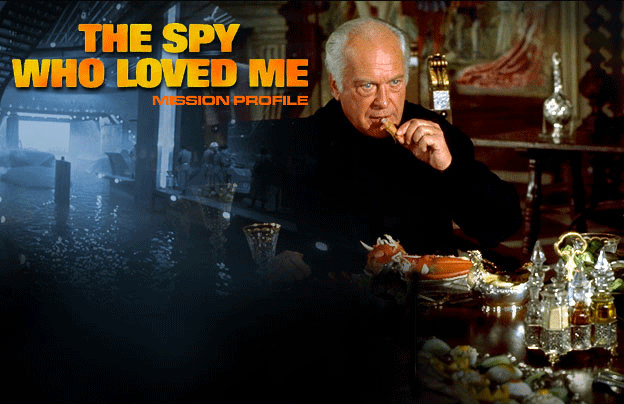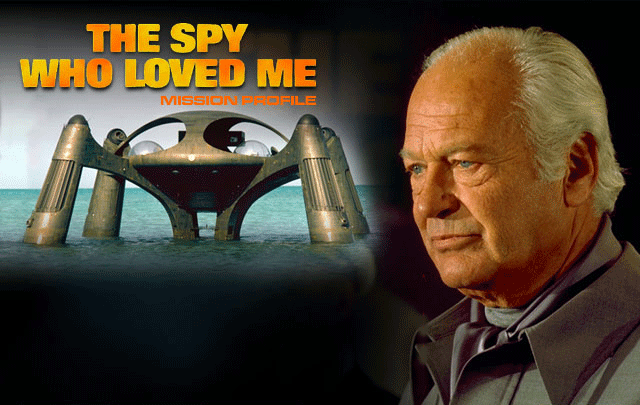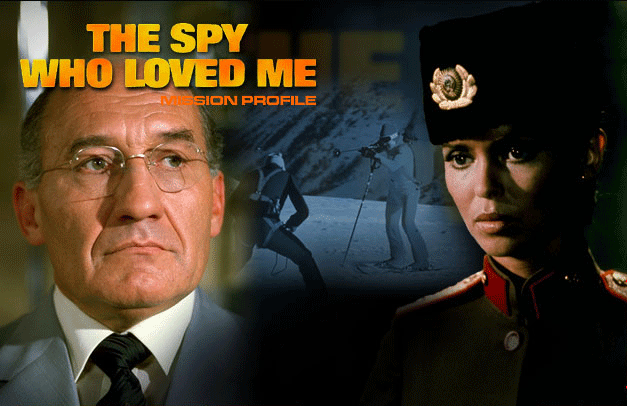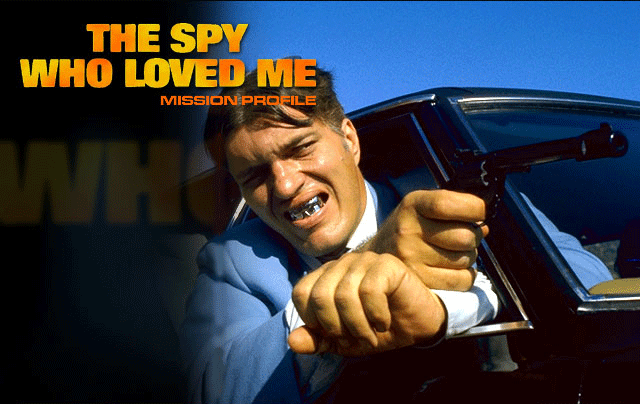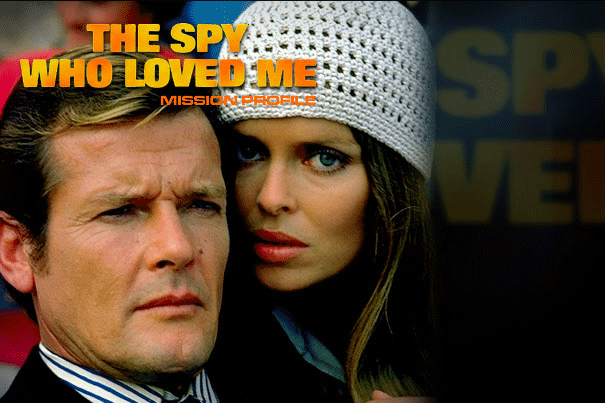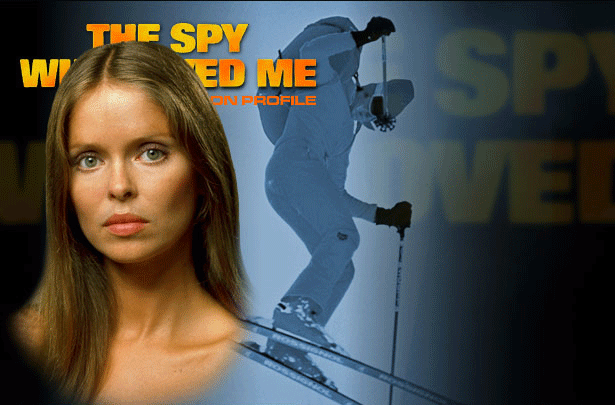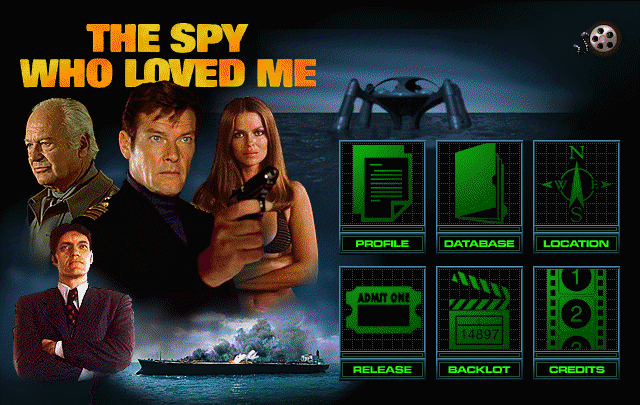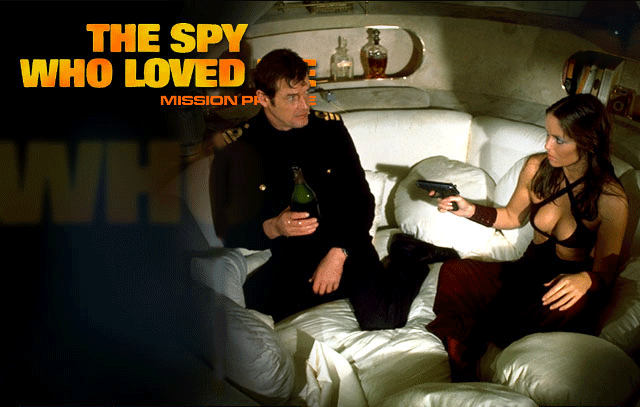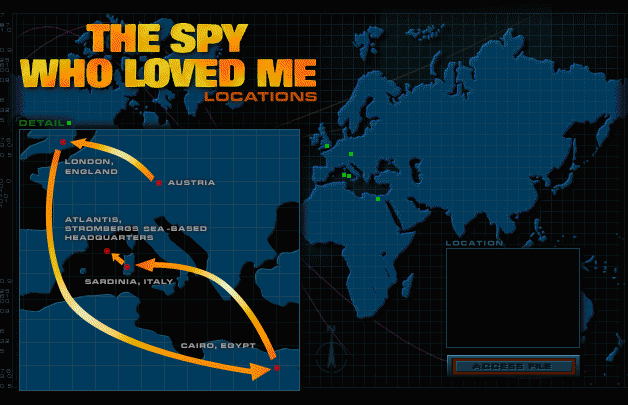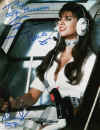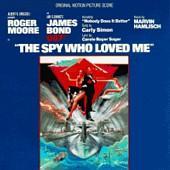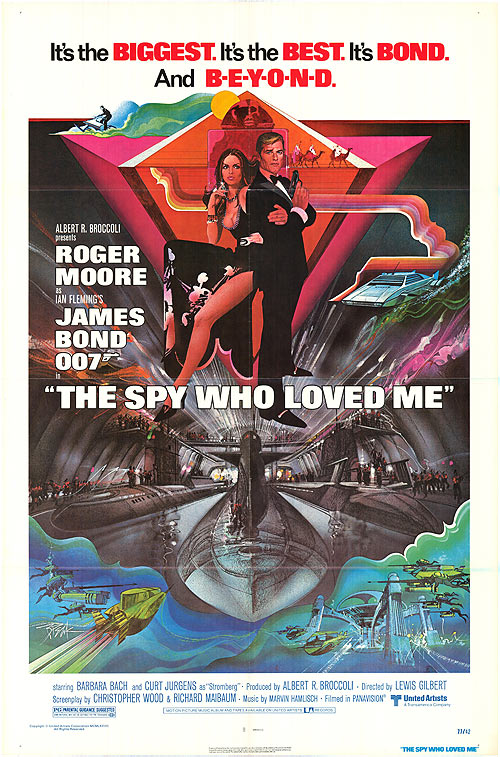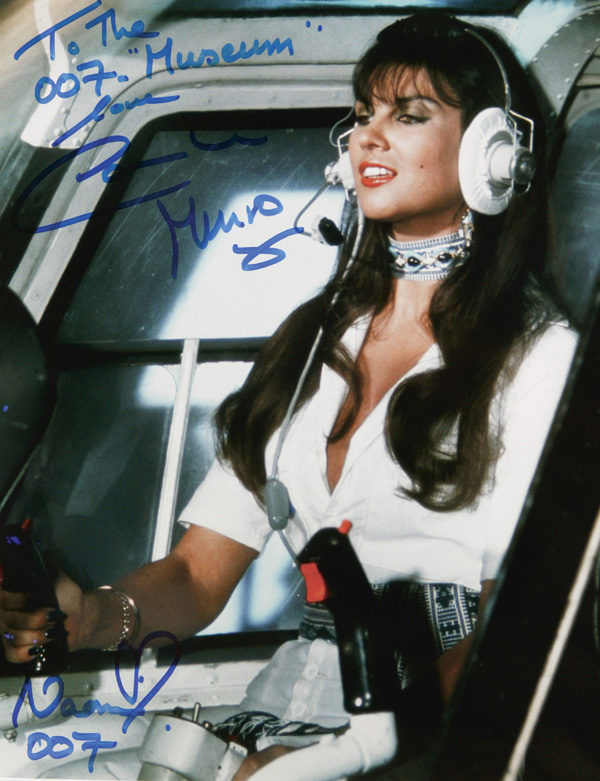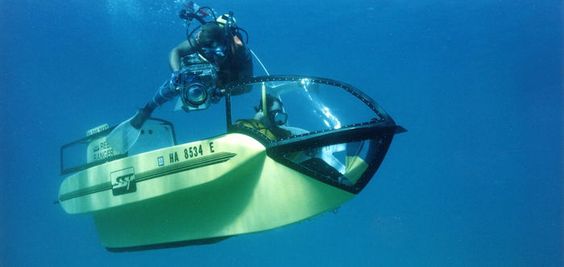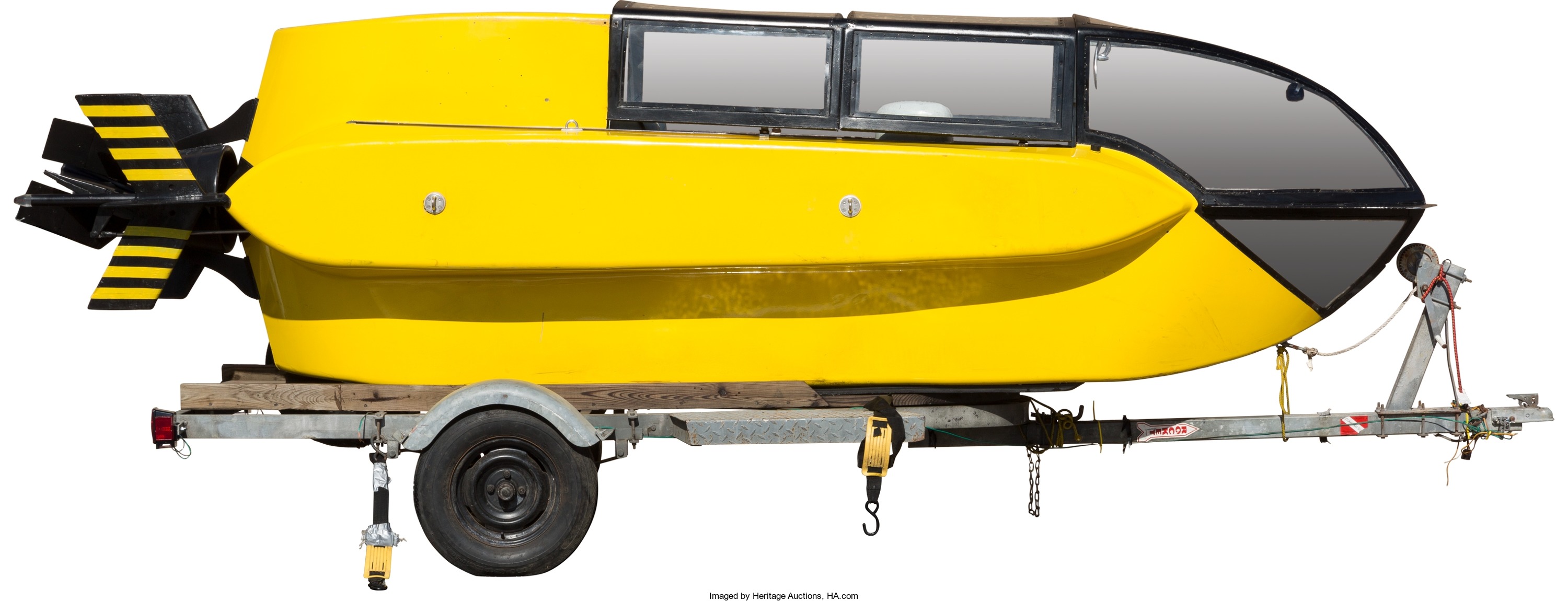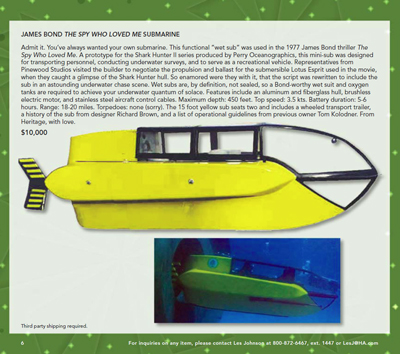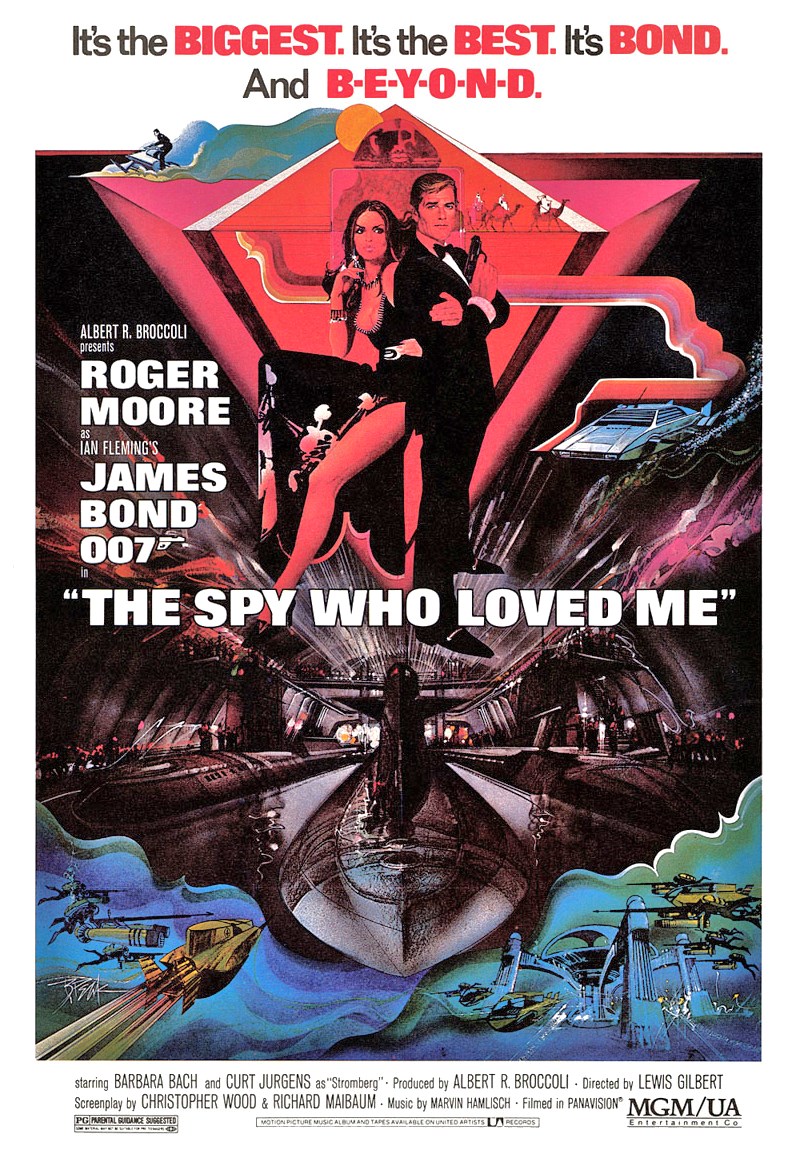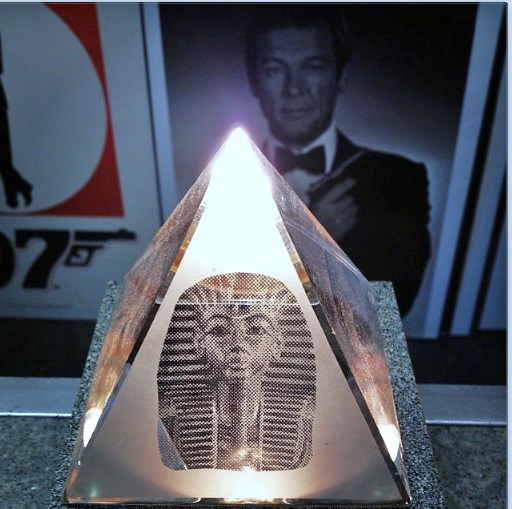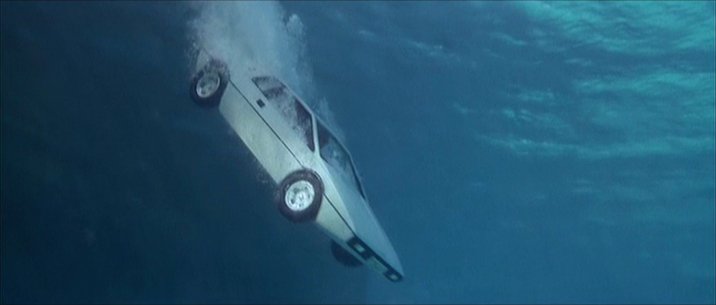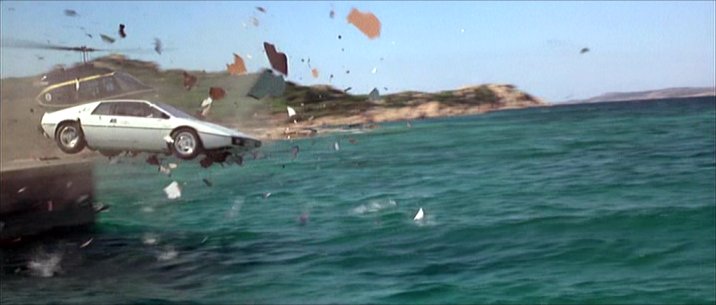|
Trivia - The Spy Who Loved Me Production
This is the only Eon Productions James Bond movie to be
made in the same order as its source novel was written. The Spy Who Loved Me was
both the 10th official series James Bond movie produced and the 10th Ian Fleming
James Bond novel written.
Harry Saltzman sold his interest in
James Bond during December 1975 while this movie was in pre-production. Though
the last James Bond movie which was co-produced by Harry Saltzman and Albert R.
Broccoli was The Man with the Golden Gun (1974), the dissolution of the
partnership did not occur until after that film was released. Saltzman was
actually involved with the The Spy Who Loved Me (1977) during early
pre-production of the film, as was the original director Guy Hamilton.
A number of writers contributed to the
script during its development. These included directors John Landis and original
director Guy Hamilton; script writers Richard Maibaum, Stirling Silliphant, Cary
Bates, Tom Mankiewicz and Anthony Barwick; and authors 'Anthony Burgess' ,
Ronald Hardy and Derek Marlowe. In total, twelve scriptwriters worked on the
script which went through to fifteen drafts.
Screenwriter Richard Maibaum's original
draft of The Spy Who Loved Me (1977) featured an alliance of international
terrorists entering SPECTRE's headquarters and deposing Blofeld before trying to
destroy the world for themselves to make way for a New World Order. This script
was deemed too political by producer Albert R. Broccoli.
Gerry Anderson (creator of "Thunderbirds"
(1965)) threatened legal action against the producers as he felt the film came
too close to a story proposal he had offered the Bond producers in the 1960s.
The suit was dropped, though EON Productions ended up purchasing the rights to
Anderson's original proposal.
The delay in production of this movie
was contributed to by legal issues to do with the script. Thunderball (1965)
co-writer and producer Kevin McClory brought a suit against the production
stating that his script "Warhead" had been allegedly plagiarized. This
was due to the similarity in story-lines involving nuclear submarines. The
injunction was ultimately rejected and EON productions could proceed. However,
the original name of the villain was changed from Stavros to Stromberg, due to
the similarity between Stavros and the middle name of Ernest Stavro Blofeld, the
use of this character legally belonging to McClory. Interestingly, apparently in
a very early version of the script, it was intended to have Blofeld return as
the villain.
Several scenes, including the one where
Bond and Anya meet each other in a Cairo bar, were written by an uncredited Tom
Mankiewicz. According to him, the scene originally made reference to Tatiana
Romanova, the Bond girl in From Russia with Love (1963), but this was cut. If it
had been left in, the film would have included direct references to both the
Sean Connery and George Lazenby eras of the Bond series.
Product placements and promotional
tie-ins seen in the movie included BOAC, Lotus Cars, Bacardi, and Jetski
Wetbikes.
Vehicles featured included a white Lotus
Esprit S1 turbo sports car adaptable Perry submarine-car, which was also known
by the production as Margie Nixon and Wet Nellie; a Arctic Enterprises Wetbike
hydrofoil water motorcycle; Jaw's Telephone Service gray Sherpa Van; a yellow
and black Kawasaki Z900 motorbike with sidecar; Hovercraft Speedboat jettisoned
from Atlantis; a black and yellow Shark Hunter mini-submarine; a black and
yellow Bell 206 Jet Ranger helicopter; black Ford Taunus car; the Liparus oil
tanker which includes a Mini Moke; Westland HH-3 Sea King and Westland Wessex HC
Mk 2 helicopters; 1977 Ford Cortina 2.3 Ghia; USS Wayne and Russian Potemkin
Submarines; a Stromberg Enterprises company motorboat; a small bus and a
spherical underwater escape pod from Atlantis.
Introduced a spy sea scooter known as a
"wetbike" (better known now as a jet ski) to the world, sparking a new
water-sport industry. This gadget was commonly referred to as the motorbike that
rides on water.
In his audio-commentary, Roger Moore
comments on the opening parachute ski-jump that could have gone horribly wrong
for stuntman Rick Sylvester. After the jump, a disengaged ski clipped the
unopened chute as it was falling. The ski could could easily have prevented the
chute from opening. It can still be seen in the final footage that the ski clips
the about-to-open parachute. Rick Sylvester was paid $30,000 for the skiing
stunt in the opening sequence.
An advertisement inspired the famous
opening skiing sequence. It was for Canadian Club Whisky and featured Rick
Sylvester jumping off Asgard in Greenland. The ad had actually been staged
elsewhere and had really been performed off the El Capitain Peak, Yosemite
Valley, California. The ad read: "If you Space Ski Mount Asgard...before
you hit the ground, hit the silk!". Sylvester performed the stunt for the
film which famously ended with a parachute of the Union Jack opening. This
opening sequence was recently parodied in Bridget Jones: The Edge of Reason
(2004) and was imitated with the air balloon in Octopussy (1983) and paid homage
to in the Gustav Graves parachute drop in Die Another Day (2002). Sylvester also
did the Meteora mountain fall in For Your Eyes Only (1981).
The famous Union Jack parachute ski jump
stunt during the film's pre-title sequence was (reportedly) originally suggested
by former Bond star George Lazenby to be used in On Her Majesty's Secret Service
(1969), but the necessary equipment to film it was not available then.
First James Bond movie to feature an
actor playing James Bond to appear as part of the opening titles sequence itself.
In On Her Majesty's Secret Service (1969), footage from previous films including
an actor playing James Bond was edited into the opening sequence.
The Lotus submersible (the Lotus Esprit
underwater car or Lotus submarine car) was code named Esther Williams in an
early draft of the script and was also nicknamed by the crew as Wet Nellie
(after the mini-helicopter in You Only Live Twice (1967)). It is called Wet
Nellie in the novelization.
The chase sequence in Sardinia involving
the Lotus Esprit runs for seven minutes.
After the film's release, demand for
white Lotus Esprit cars surged to the point that new customers had to be placed
on a three-year waiting list.
The Aquapolis, the enormous Japanese
floating sea structure, was considered as an exterior set for the Stromberg
Marine Research Laboratory, Atlantis. It resembled an oil rig (something which
had already been used in Diamonds Are Forever (1971)), had a gigantic
three-tiered deck which was also a helicopter pad measuring 100 m2, and was
supported by about a dozen major pillars. It cost 13 billion yen and had been
built in Hiroshima in 1975 then transported to Okinawa for the International
Ocean Exposition. Depending on weather conditions, it could partially rise or
submerge into the ocean, in a similar fashion to the Atlantis setting of the
movie's script. At the time of the location scout, it was incomplete and after
attempts to make the mega-structure work, production designer Ken Adam felt that
it lacked the right creative elements for the nautical villain's lair.
Disappointingly, the floating sea city was rejected as an exterior location for
Atlantis and the filmmakers decided to go with a model. Sadly, it was closed to
tourist visits in 1993 and in 2000, after twenty-five years, the real-life
floating city in the ocean was sold for scrap after the company that owned it
went bankrupt.
During the Egyptian shoot, the catering
didn't arrive. Producer Albert R. Broccoli jumped into action and took a jeep
and some crew, went into town and got some tomatoes, pots, pans and pasta was
flown in from Cairo. Broccoli, well known as an amateur chef at home, cooked up
a feast for the cast and crew, served by him and Roger Moore. A sign was painted
in the mess-room: "Trattoria Broccoli."
In one scene amongst the pyramids when
Jaws is trailing a hiding agent 007, a still photograph of Roger Moore was used
when they needed to have him in the shot. Hardly anyone noticed this during the
film's release. Further, all the shots of pyramids used were actually models.
The eyesight of cinematographer Claude
Renoir was failing at the time and he could not see to the end of the massive
supertanker set. As a result, he could not supervise the lighting. Ken Adam
turned to his friend Stanley Kubrick, who under the condition of complete
secrecy supervised the lighting.
$1 million of the $13.5 million budget
was spent by production designer Ken Adam on building the largest sound stage in
the world: 336'x139'x44'. The set was used for the interior shots of Stromberg's
supertanker. The tank had a capacity of 1.2 million gallons.
The set for Stromberg's supertanker was
named "the Jonah Set", in reference to the Biblical story of Jonah,
who is swallowed by a whale. In the film, the tanker swallows submarines.
The date the new OO7 Stage was opened
and christened at Pinewood Studios was 5 December 1976, coinciding with the
production of this movie. Former English Prime Minister Harold Wilson, Roger
Moore and Barbara Bach partook in the opening ceremonies for the stage which was
first used for the production of this movie.
The literal translations of some this
film's foreign language titles include The Spy That Loved Me (Spain, Norway,
France, Denmark); 007, My Beloved (Finland); The Spy That I Loved (Portugal);
Beloved Spy (Sweden); The Spy That Loves Me (Poland) and 007, The Spy Who Loved
Me (Brazil)
The title song "Nobody Does It
Better" sung by Carly Simon and composed by Marvin Hamlisch was a hit in
both the USA and UK. The song was so successful that the title "Nobody Does
It Better" has become part of James Bond universe phraseology. It charted
in the USA on 23 July 1977 and went to No. #2. It stayed there for three weeks
and was in the US charts for 25 consecutive weeks. It entered the charts in the
UK on 6 August 1977 and peaked at the No. #7 position. The song in the USA also
achieved the classification of being a Gold Single. The soundtrack album charted
in the USA on 27 August 1977 and went to the No. #40 rank.
A piece of music composed by Mozart
inspired the title song 'Nobody Does It Better" composed by Marvin Hamlisch.
Indeed, the film includes in its score a number of pieces of classical music by
such composers as Johann Sebastian Bach (Air in Orchestral Suite No. 3, BWV
1068), Frédéric Chopin (Nocturne No. 8 in D-Flat, Op. 27 No. 2), Camille
Saint-Saëns (The Aquarium from The Carnival of the Animals) and also by
Wolfgang Amadeus Mozart, the Andante second movement of Piano Concerto No. 21
Elvira Madigan. These pieces of music however are not on the movie's soundtrack
album.
The movie received Three Academy Award
Nominations - the most ever received by a James Bond movie to date. These were
for Best Art Direction - Set Decoration, Best Score, and Best Song - "Nobody
Does It Better".
Albert R. Broccoli once named this film
along with From Russia with Love (1963) and Goldfinger (1964) as his three
favorite James Bond movies, according to an interview with the Hollywood
Reporter's Robert Osborne on 12 April 1982.
|
Story
First James Bond movie to be filmed in Dolby Stereo.
The original M's first name is heard for the only time in the
film series when Gogol refers to him as Myles (in the books, his name was
Admiral Sir Myles Messervy and was only ever mentioned in the novel "The
Man With The Golden Gun"). In addition, Bernard Lee's M calls Bond by his
first name for only the second time in the series - the first time was in On Her
Majesty's Secret Service (1969). The last time Q was referred to by his real
name (Major Geoffrey Boothroyd) was in Dr. No (1962) and From Russia with Love
(1963).
James Bond and Anya Amasovas' aliases when they first visited
Atlantis were Mr and Mrs Robert Sterling.
First Bond film to make significant references to Bond's past,
including his recruitment to the British Secret Service from the Royal Navy, his
"many lady friends", his marriage and the death of his wife, Tracy.
During the fight scene at the Pyramids between Bond and two
KGB agents, Bond at one point delivers a blow that causes one of the men to, in
reflex, cross his arms over his chest, making him resemble a character in old
Egyptian drawings.
The hull number on the sail of the U.S. submarine USS Wayne
in Stromberg's supertanker is 593. This is the number of the USS Thresher, lost
in 1963 with all hands off the Massachusetts coast.
The license plate number of the Lotus Esprit was PPW 306R.
A Minolta logo appears on the microfilm capsule.
Anya's music box-transmitter plays Lara's Theme from Doctor
Zhivago (1965).
After the van breaks down, the theme from Lawrence of Arabia
(1962) plays when Bond and XXX walk across the desert.
Russian Agent Anya Amasova's code number was XXX (i.e. as in
Agent XXX). Anya's henchmen in Egypt were called Ivan and Boris.
The name of Max Kalba's club in Cairo, Egypt was the Mujaba
Club.
A fight sequence was originally envisaged in this movie for
the Mummy Room of the Cairo Museum of Antiquities. This was scrapped but the
sequence resurface in the next Bond movie Moonraker (1979) as the fight between
Chang and Bond in the Venini glass showroom.
The Lotus Esprit underwater spy car had the following
features and gadgets: A periscope; convertible dashboard-control panel; oil
release, harpoon and cement guns; retractable turning wheels; hydroplanes;
protective louvres; television monitor; rudder and propulsion units; submarine
activator; rocket missiles and missile firing control.
The two stolen nuclear submarines were the American "USS
Wayne" and the Russian "Potemkin". The renaming of them had them
called Stromberg No. #1 and Stromberg No. #2. The submarine eating tanker that
captured them was called the Liparus.
In the scene in which Bond and his compatriots are looking at
the tracing of the submarine's course, the first few notes of the James Bond
theme are played when the line is drawn onto the map.
The warship that appears at the end is the HMS Fearless.
As a nameless soldier is drowning in the burning water during
the fight between the escaped sub crews and the evil henchmen, the dub mix uses
the infamous "Wilhelm Scream" stock sound effect.
The name of the champagne that James Bond and Anya Amasova
have in the escape capsule at the end of the movie was a Dom Perignon '52.
The closing credits say, "James Bond will return in For
Your Eyes Only (1981)" but, because of the successes of Star Wars (1977)
and Close Encounters of the Third Kind (1977), Moonraker (1979) was chosen.
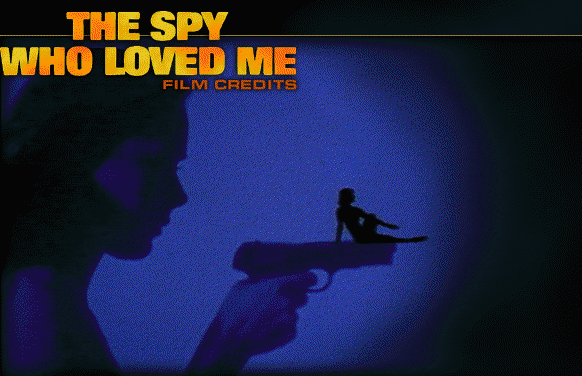
|









